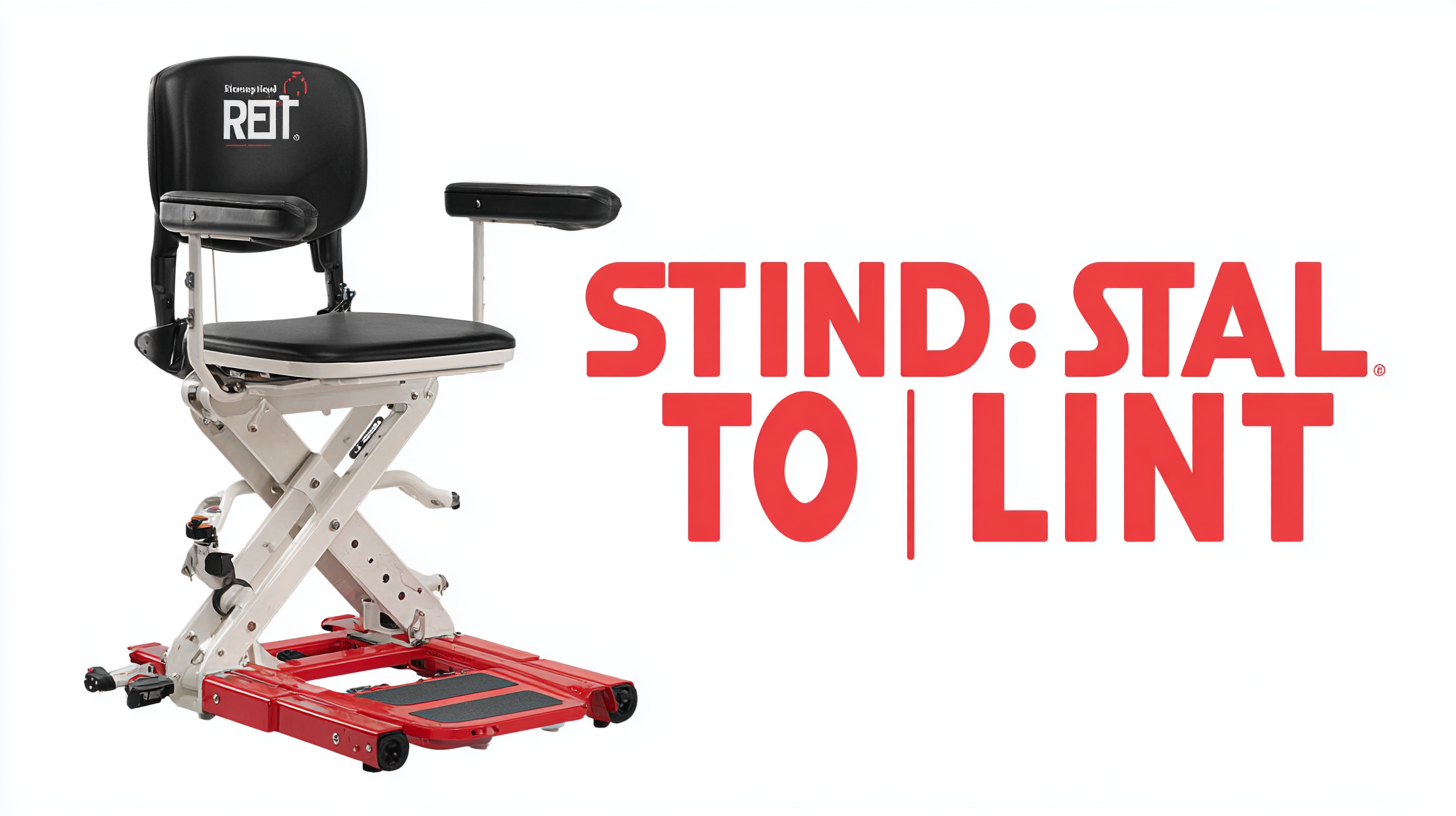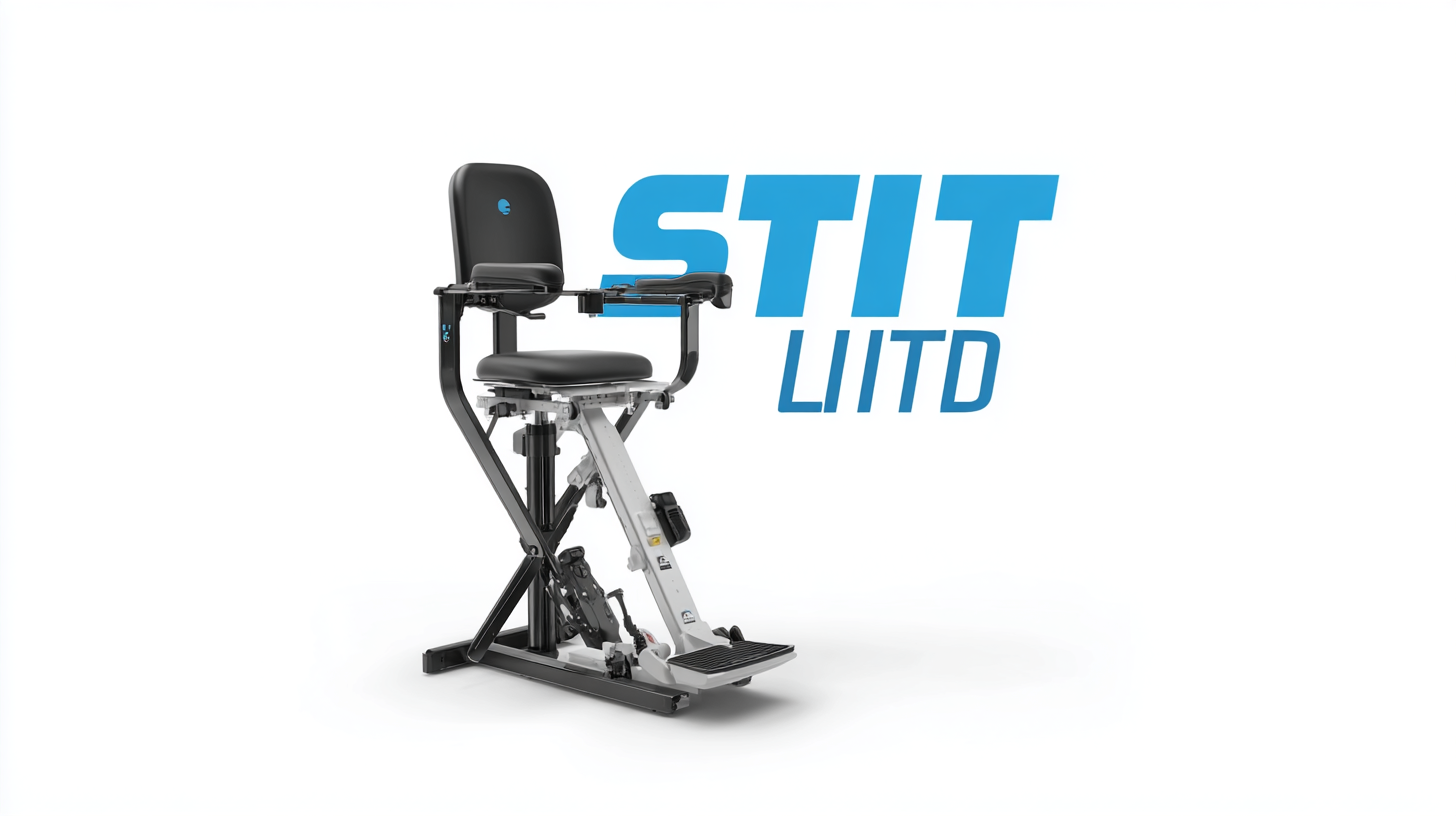2025 Global Market Trends for Sit to Stand Lift Rentals and Future Opportunities
As we look toward the future, the landscape of healthcare mobility solutions is evolving rapidly, particularly in the realm of Sit To Stand Lift Rentals. These innovative devices are not just enhancing patient care but are also adapting to the diverse needs of various care settings. However, alongside these advancements come significant challenges that stakeholders must navigate to maximize the benefits of lift rentals.

This blog will delve into the 2025 global market trends that are shaping the Sit To Stand Lift Rental industry, exploring not only the growing demand for these solutions but also the potential problems that may arise, such as maintenance costs, equipment availability, and training for proper usage. By addressing these issues, we can uncover future opportunities for growth and improved patient outcomes in this essential sector of healthcare.
Emerging Trends in Sit to Stand Lift Rentals for 2025
As we approach 2025, the market for sit to stand lift rentals is evolving, driven by the increasing demand for adaptive solutions in healthcare and aging populations. One of the most significant emerging trends is the integration of smart technology into these lifts. Innovations such as Bluetooth connectivity and app-based monitoring systems are enhancing user experience and safety, allowing caregivers to track usage patterns and adjust settings remotely. This not only streamlines operations but also empowers patients by providing more independence in their mobility.

Another notable trend is the emphasis on ergonomic designs that prioritize user comfort and safety. Manufacturers are investing in research to develop lifts that are not only functional but also cater to the diverse needs of users. Lighter materials and compact designs are making it easier for caregivers to operate these devices in tight spaces, while adjustable features ensure that lifts can accommodate a range of body types.
Additionally, rising awareness about the importance of workplace safety is pushing more facilities towards renting these devices to minimize the risk of injury for both patients and staff. The demand for training programs to educate caregivers on the efficient use of these lifts is also on the rise, ensuring that safety and care quality remain paramount.
The Role of Advanced Technology in Enhancing Lift Rental Services
As the global market for sit to stand lift rentals continues to evolve, advanced technology plays a pivotal role in enhancing the quality and efficiency of these services. Modern lifts are now equipped with smart features that improve usability and safety, allowing caregivers to operate equipment with minimal training. Innovations such as user-friendly interfaces, integrated sensors, and automated adjustments ensure that the lifts can meet the unique needs of each patient, making the entire rental process smoother for both providers and users.
Moreover, the integration of telematics and data analytics into lift rental services has transformed the way companies manage their fleets. By utilizing real-time data, companies can monitor the performance, usage patterns, and maintenance needs of their lifts, ultimately leading to reduced downtime and improved service reliability. This technological advancement not only increases customer satisfaction but also opens new revenue streams as rental providers can offer premium services based on predictive analytics, thereby positioning themselves competitively in the market.
Market Growth Drivers: Demographic Changes and Healthcare Needs
As we look ahead to 2025, the market for sit-to-stand lift rentals is poised for significant growth, primarily driven by demographic changes and evolving healthcare needs. The aging global population, projected to reach 1.5 billion people aged 65 and older by 2050, creates an escalating demand for assistive devices in both home care and rehabilitation settings. According to a report by Grand View Research, the mobility aids market, which includes sit-to-stand lifts, is expected to grow at a compound annual growth rate (CAGR) of 6.5% over the next several years, indicating the rising necessity for such equipment.
Furthermore, the increasing prevalence of chronic conditions among the elderly, such as arthritis and mobility impairments, underscores the importance of efficient mobility solutions. The World Health Organization suggests that over 46% of older adults have some form of disability, a statistic that amplifies the urgency for accessible healthcare innovations. Sit-to-stand lifts not only enhance patient mobility but also reduce the physical strain on caregivers, making them essential tools in both clinical and home environments. As healthcare systems adapt to cater to these demographic shifts, the sit-to-stand lift rental market is set to capitalize on these pivotal trends.
2025 Global Market Trends for Sit to Stand Lift Rentals and Future Opportunities
| Region | Expected Market Size (USD Millions) | CAGR (%) | Key Demographic Trends | Healthcare Needs |
|---|---|---|---|---|
| North America | 500 | 5.5% | Aging Population, Increased Disability Rates | Rising Demand for Home Healthcare Solutions |
| Europe | 400 | 6.0% | Increased Life Expectancy, Urbanization | Shift Towards Patient-Centric Care |
| Asia-Pacific | 350 | 7.2% | Growing Elderly Population, Economic Growth | Increased Spending on Healthcare Infrastructure |
| Latin America | 200 | 5.0% | Increase in Chronic Diseases, Young Population | Lack of Accessibility in Healthcare Facilities |
| Middle East & Africa | 150 | 4.5% | Rising Urbanization, Youth Population Growth | Growing Demand for Rehabilitation Services |
Opportunities for Chinese Manufacturers in the Global Lift Rental Market
The global lift rental market is poised for significant growth, presenting lucrative opportunities, especially for Chinese manufacturers. With an estimated market size of $9.199 billion for scaffolding by 2025, and a compound annual growth rate (CAGR) of 6.5% projected to reach approximately $1.5094 billion by 2033, there is a clear shift towards innovative lifting solutions that enhance operational efficiency and safety. The telehandler segment is also demonstrating robust potential, driven by advancements in technology and varying consumer needs, making it an attractive avenue for investment.
In addition, the aerial work platform (EWP) market is expecting to expand from $3.89 billion in 2025 to about $5.8231 billion by 2033, with a CAGR of 3.8%. This upward trend signals a growing demand for lifting equipment that can adapt to a wide array of applications across multiple industries. As the global market continues to evolve, Chinese manufacturers must leverage their technological capabilities and cost-effective production methods to capture a greater share of this expanding market. The combination of increasing demand for equipment rentals and the push for modernization in lifting solutions creates a compelling environment for growth in the lift rental sector.

Sustainability Practices and Their Impact on Lift Rental Services
As sustainability becomes a guiding principle across various industries, the lift rental services sector is not exempt from its influence. The drive toward eco-friendly practices is reshaping the way sit to stand lift rentals are offered and utilized. Companies are increasingly prioritizing energy-efficient models that reduce carbon footprints while maintaining high-performance standards. By integrating sustainable practices, rental services not only meet regulatory demands but also appeal to environmentally conscious consumers.
Moreover, the implementation of green technologies in lift rental operations significantly enhances customer satisfaction and loyalty. Rental companies are exploring innovative solutions such as battery-powered lifts that minimize emissions and noise, thereby improving user experiences in sensitive environments like hospitals and nursing homes. By adopting a sustainable business model, these companies position themselves for future growth, attracting clients who value corporate responsibility and sustainable offerings. The commitment to sustainability not only contributes to a healthier planet but also opens doors to new opportunities in the evolving market landscape.
